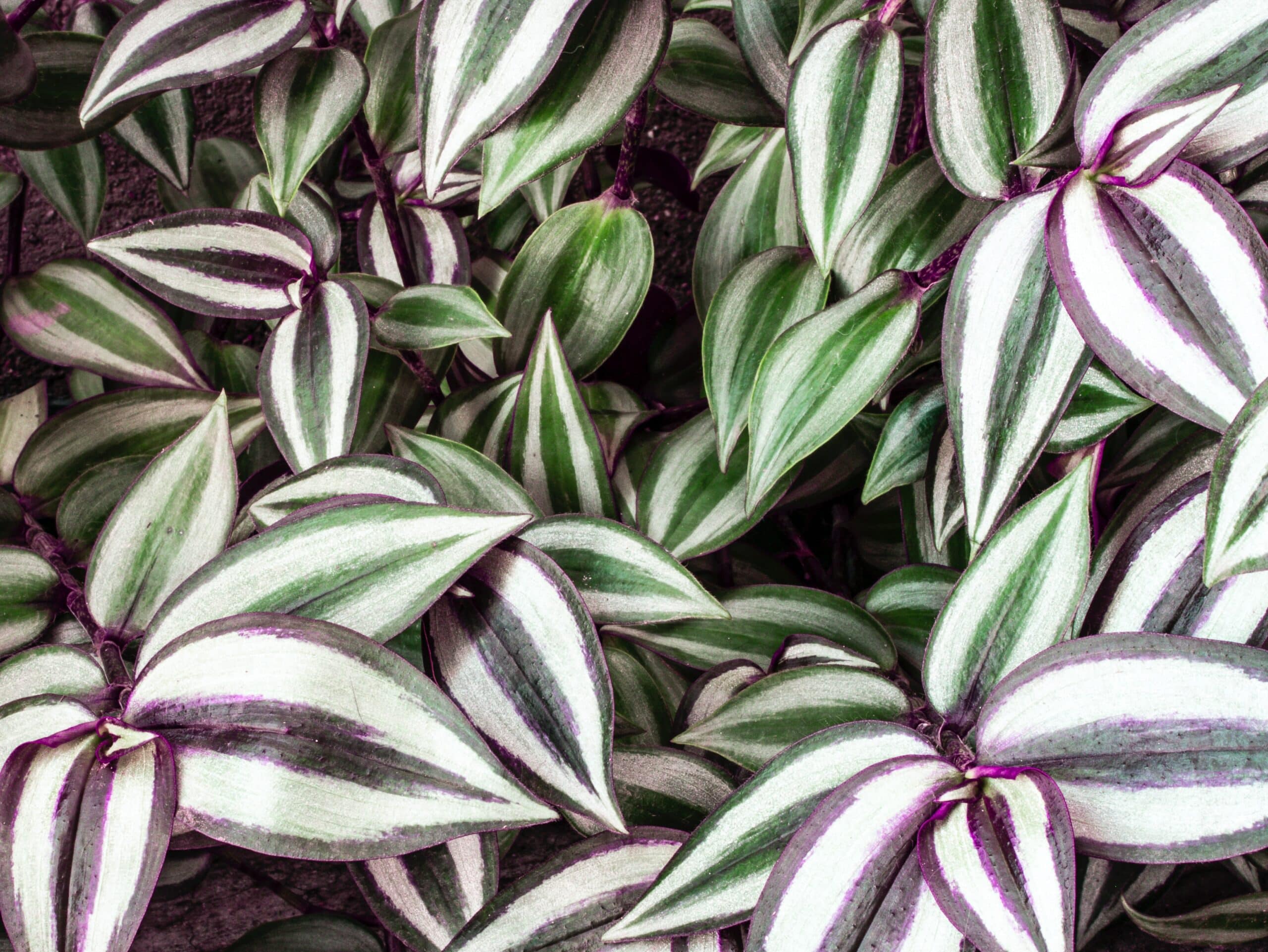The Alocasia Zebrina is an exotic and captivating plant with unique beauty. Its unique appearance of striped, arrow-shaped leaves makes it a great addition to your garden or home. With its striking visual appeal, the Alocasia Zebrina can make any area look more vibrant and alive. But like all plants, it needs proper care and attention in order to thrive. As a specialist in botany and gardening, I will explain how to successfully grow and care for this eye-catching species.
Careful consideration must be taken when it comes to selecting the right environment for the Alocasia Zebrina. The perfect spot should have access to indirect sunlight, as direct exposure to harsh light can cause the leaves to turn yellow or brown. The soil should also be well-draining and slightly acidic, as overly wet soil can lead to root rot, while alkaline soils can stunt their growth.
In addition to providing a suitable environment, proper watering is essential in keeping your Alocasia Zebrina healthy. Watering too much or too little can both harm the plant’s health; thus, I recommend giving them just enough water so that the soil remains moist but not soggy. To provide an extra boost of nutrition, you may want to fertilize your plant every few months with a balanced fertilizer solution for tropical plants.
By following these guidelines on how to properly grow and care for the Alocasia Zebrina, you can create a stunning display of foliage in your home or garden that will last for many years!
Overview Of Alocasia Zebrina
Alocasia Zebrina is like a precious gem – it’s difficult to find, but when you do, it’s an amazing sight to behold. This plant is a unique and popular variety of Alocasia that has distinctive foliage with dark green and silver striped leaves. It can be an eye-catching addition to any garden or living space and is relatively easy to care for.
When caring for Alocasia Zebrina, the most important factor is understanding its ideal growing conditions. This species prefers warm temperatures with high humidity levels, along with well-draining soil and plenty of bright indirect light. When these needs are met, the plant will thrive with minimal maintenance. To ensure healthy growth, water regularly and fertilize every two weeks during the active growing season from spring through fall. Additionally, be sure to remove dead or yellowed leaves promptly in order to encourage new growth.
Finally, proper pest control is essential for keeping Alocasia Zebrina healthy. Inspect your plants regularly for signs of infestation such as spots on the leaves or webbing on stems. If pests are found, treat them immediately using safe biological methods such as neem oil or insecticidal soap sprays. Taking good care of your Alocasia Zebrina will reward you with a lush and beautiful specimen that will bring life into any space! Moving forward, let’s explore how we can provide the ideal growing conditions for this captivating plant.
Ideal Growing Conditions
Believe it or not, the perfect environment for Alocasia zebrina to thrive is a challenge to create. It’s ironic that these exotic-looking plants, with their luxuriant foliage and elegant presence, require very specific conditions in order to reach their full potential. As a specialist in botany and gardening, I’m here to help you provide the best possible environment for your Alocasia zebrina. Let’s start by looking at the ideal growing conditions:
First and foremost, Alocasia zebrina requires bright, indirect light with some dappled shade during the hottest part of the day. This can be challenging for some people living in more urban areas who don’t have access to natural shade. Secondly, it does best when temperatures are between 65°F and 75°F (18°C – 24°C). Lastly, it needs high humidity levels of around 50 percent or higher with plenty of air movement throughout the day.
Achieving these ideal growing conditions for an Alocasia zebrina takes dedication and creativity on your part as a gardener. You’ll need to find ways to provide adequate air circulation while maintaining the necessary temperature and humidity levels. Keep in mind that temperature fluctuations can cause stress on the plant so you may want to invest in a humidifier if needed. With proper care and attention – plus some luck – you can create a thriving environment for this beautiful tropical houseplant!
Soil Requirements
Alocasia zebrina is an attractive, tropical perennial that can be found in many gardens. It’s known for its large, glossy leaves with bold veins that give a distinct zebra-like appearance. To keep this plant healthy and growing well, it has specific soil requirements. Let’s take a look at what they are.
An interesting statistic to note is that Alocasia zebrina prefers acidic soil with a pH level between 4.5 and 6.5. To achieve this, gardeners often use a combination of peat moss and orchid bark as the primary soil components. This mixture should have good drainage but also retain some moisture to discourage root rot in the plant’s rhizomes. Adding compost or aged manure can provide further nutrient benefits while keeping the pH within the desired range.
It’s important to remember that Alocasia zebrina is not tolerant of salty soils and prefers evenly moist conditions to help prevent root rot and leaf spot diseases from developing. To ensure this, mulching around the base of the plant can help conserve water and maintain consistent moisture levels in the soil without becoming soggy or overly wet for long periods of time.
By following these soil requirements and using mulch when needed, Alocasia zebrina will stay healthy and happy for years to come–and you’ll be able to enjoy its unique zebra-striped leaves all season! Next, let’s talk about how much water is needed for optimal growth in this stunning tropical perennial.
Watering Needs
When it comes to the watering needs of Alocasia Zebrina, there are a few key points to keep in mind. First, these plants prefer moist soil and need regular and consistent watering. Second, they should never be allowed to sit in water and may require more frequent watering in hot weather. Lastly, the top inch or two of soil should be allowed to dry between waterings.
These plants benefit from a good soaking once every week or so during the growing season, then less often during winter months when growth slows down. It’s best to water in the morning so that leaves have time to dry before nightfall which can help prevent fungal problems. Additionally, misting is recommended for increasing humidity around Alocasia Zebrina as this helps it thrive – this is especially important if you live in a dry climate.
To get an accurate idea of how often you need to water your plant, check the soil before adding any more moisture – if it feels dry one inch below surface level, it’s time for a drink! Keeping an eye on soil moisture levels will ensure your Alocasia Zebrina gets just the right amount of hydration for healthy growth and development.
Fertilizing Needs
Fertilizing Alocasia Zebrina is an important part of its care. In fact, according to research from the University of Hawaii, it’s estimated that up to 50% of all plants’ growth and health can be attributed to regular fertilizing. As a specialist in botany and gardening, I highly recommend following a specific fertilizer schedule for your Alocasia Zebrina to keep it thriving and healthy.
When it comes to fertilizing, you should use a balanced liquid fertilizer that is formulated for foliage plants every two weeks during the growing season. Avoid using too much, as this can lead to leaf burn or other damage. You may also want to consider adding organic matter such as compost or aged manure into the soil during planting or repotting. This will help increase nutrient levels and give your plant a boost of energy.
It’s also important not to overdo it with fertilizers – too much can actually cause more harm than good. If your Alocasia Zebrina shows signs of yellowing leaves or wilting, check the soil moisture level and adjust as needed before applying fertilizer. With proper care, your Alocasia Zebrina will stay healthy and vibrant for many years!
Temperature requirements are an equally important factor when caring for Alocasia Zebrina. The ideal temperature range for these plants is between 65°F (18°C) – 90°F (32°C). Any temperatures outside of this range can lead to stunted growth and poor health in general.
Temperature Requirements
A temperature of 65 to 75 degrees Fahrenheit is absolutely essential for growing Alocasia zebrina. It’s almost like a magical formula – get it just right and you’ll be rewarded with lush, vibrant foliage! But make even a slight misstep when it comes to temperature and your plant could suffer some serious consequences. Truly, it’s an alchemical art to master the temperature requirements for Alocasia zebrina.
For most of the year the ideal temperature range should be kept, but if temperatures drop below 60 degrees F (15 C) or go over 85 degrees F (29 C), you’ll need to take action quickly. If temperatures go too low, move your plant to an indoor area that is slightly warmer; if they’re too high, try moving it away from windows or other sources of direct sun. Additionally, during colder months you may want to invest in a heating mat or heater for your plant as well as an oscillating fan to ensure proper air circulation.
In terms of humidity requirements for Alocasia zebrina, there are two things you need to keep in mind: firstly, this species prefers a humid environment; secondly, its roots should not be exposed to direct moisture. To maintain the perfect level of humidity for your Alocasia zebrina, consider investing in a humidity tray or misting system. With these tips and tricks up your sleeve, you can easily create an optimal environment for your beloved plant!
Humidity Requirements
Humidity is key to the success of growing Alocasia Zebrina. Although this plant can tolerate average humidity levels, it prefers higher humidity. To maintain the ideal level of moisture and keep the leaves healthy and glossy, regular misting is recommended.
Misting plants is an easy way to increase humidity levels without having to purchase an expensive humidifier. You can also create a makeshift humidifier by placing a shallow tray filled with pebbles and water next to your plant. The water will evaporate and provide your Alocasia Zebrina with much-needed moisture. Additionally, grouping multiple plants together helps raise the humidity around them because transpiration from their leaves increases moisture in the air.
However, avoid getting water on the foliage as this can cause leaf spotting or damage. Therefore, it’s best to mist in the morning when temperatures are cooler and there’s less chance of burning or scalding the plant’s leaves due to direct sunlight. By adhering to these simple tips, you can ensure your Alocasia Zebrina will thrive in its home environment! Now let’s look at how pruning and trimming affects this delightful houseplant…
Pruning And Trimming
Pruning and trimming are essential for the proper care of Alocasia Zebrina. If left unchecked, the plant can become leggy and unruly. To bring it back into shape, start by removing any dead or discolored leaves. Then use a sharp pair of scissors to trim away any dead stems. This will help promote healthier growth in the long run by allowing more light to reach the lower parts of the plant.
It’s also important to prune away any branches that cross or rub against each other as they can damage each other and cause disease. When pruning, be sure to leave at least three sets of leaves on the stem so it has enough energy to regrow properly. Aim for a symmetrical shape overall, but don’t worry about making it perfect; just make sure that all parts of the plant get an even amount of sunlight and airflow.
Taking these steps will encourage your Alocasia Zebrina to thrive, so don’t forget to give it some extra love with regular trimmings! With proper pruning and trimming techniques, your plant should stay healthy and look beautiful for years to come. Now let’s move onto propagation techniques for Alocasia Zebrina—a great way to get new plants from an existing one!
Propagation Techniques
Propagating Alocasia Zebrina is like a game of chance. You never know which method will work best, and success may take some time and patience. Whether you’re a botanist or an amateur gardener, the process of propagating this beautiful plant is well worth the effort.
Propagating Alocasia Zebrina can be done in several ways: by division, stem cuttings, or seed. Division is the simplest approach and requires minimal effort. Simply divide a mature plant into sections and replant each piece in separate pots with well-draining soil. Stem cuttings are another option; cut a piece of stem that has at least two leaves on it, place the cutting in water or wet soil for rooting, then transplant it when roots have developed. Finally, seeds can be used to propagate Alocasia Zebrina, although this method takes much longer and requires more skill than the other two options.
No matter which propagation method you choose to use, make sure your plants are kept in warm, bright areas with plenty of humidity to ensure successful growth. With proper care and attention, your new Alocasia Zebrina plants will soon be thriving! Now that we’ve looked at propagation methods, let’s move onto pest control for this remarkable plant.
Pest Control
In the area of pest control for Alocasia zebrina, there are a few steps that can be taken to keep them healthy and free from disease. The first step is to check the plant regularly for signs of pests, such as aphids or mealybugs. If any of these pests are found, it is important to take immediate action to eliminate them using insecticides or other measures. Additionally, proper hygiene and sanitation should be practiced when handling the plants in order to reduce the risk of infection.
When considering pest control for Alocasia zebrina, here are a few key points to bear in mind: •tRegularly inspect the plants for signs of pests •tTake immediate action if any pests are found •tPractice good hygiene when handling the plants •tUse insecticides or other methods to eliminate pests
It is also important to consider prevention by keeping the plant away from areas that may attract pests, such as standing water or compost piles. Finally, pruning and deadheading can help reduce the spread of disease and infection. By following these precautionary steps and being vigilant about pest control, you can ensure your Alocasia zebrina stays healthy and vibrant. With careful monitoring and prompt action, you can maintain a beautiful specimen year-round.
Signs Of Disease And Disorders
Signs of disease and disorders in Alocasia zebrina are like a fog that envelops the plant, slowly making it’s presence more and more apparent. It can be hard to detect at first, but there are certain telltale signs to look out for:
- Wilting leaves – If the leaves of the Alocasia zebrina start wilting or drooping, it could be a sign of root rot caused by over-watering or poor drainage.
- Discoloration – If the leaves appear discolored or yellowed, it could be a sign of nutrient deficiency or fungal infection.
- Stunted growth – If the plant’s growth is stunted, this could indicate nutrient deficiency or an insect infestation.
- Premature leaf drop – If the leaves begin falling off prematurely, this could be a sign of too much direct sunlight or low humidity levels.
- Brown spots – Brown spots on the leaves may indicate bacterial infections.
It is important to diagnose any diseases and disorders early on as they can easily spread throughout the whole plant if left unchecked. An experienced botanist should be consulted if you suspect your Alocasia zebrina is suffering from any diseases or disorders so that they can advise you on the most suitable course of action. With timely intervention and proper care, these issues can usually be resolved without too much trouble. To ensure your Alocasia Zebrina stays healthy and happy for years to come, its repotting requirements must also be taken into consideration.
Repotting Requirements
Repotting is an important part of caring for Alocasia zebrina. Just like us humans, plants need a change of scenery every now and then to keep them healthy and growing. As such, repotting should be done every two to three years, depending on the growth rate. Let’s explore this process further!
Like any other houseplant, Alocasia zebrina needs its roots to be checked before repotting. It’s best to check on the root health every spring or summer when you’re ready to move it into a new pot. If you notice that the roots are cramped or congested in the pot, it’s time for a bigger home! Make sure you choose a pot with plenty of drainage holes so that excess water can escape and not make your plant soggy.
Once you have chosen your new pot, you will need some quality soil mix suitable for tropical plants. You should also add in slow-release fertilizer granules during repotting as well as some perlite if necessary. Place the plant into the new pot and fill up with soil until it reaches about an inch from the top. Give your Alocasia Zebrina a thorough watering and place it in its new home!
With proper care and attention, your Alocasia Zebrina will thrive in its new environment — quickly adapting to its surroundings while continuing to provide those beautiful zebra-striped leaves we all know and love! Now let’s look at how we can use this gorgeous plant in our homes and gardens...
Uses Of Alocasia Zebrina
Alocasia Zebrina is a rare and delightful addition to any garden. Its unique, striped leaves make it an eye-catching centerpiece in any garden space. Here are 13 uses of Alocasia Zebrina that will give your outdoor space a special touch:
An ornamental plant – Alocasia Zebrina’s striking foliage can provide a beautiful backdrop for any garden or patio.
A low-maintenance houseplant – Alocasia Zebrina is an easy to care for houseplant that can thrive in warm, humid conditions with little effort.
A specimen plant – This plant’s bold foliage makes it an ideal choice for adding contrast and interest to a landscape design.
A privacy hedge – Planting several Alocasia Zebrinas together can create an effective hedge that provides both privacy and beauty for your outdoor space.
As a specialist in botany and gardening, I’m sure you’ll agree that the unique beauty of this tropical plant offers great opportunities for landscaping projects or simply sprucing up your outdoor living area. With its lush foliage and striking coloration, Alocasia Zebrina adds life to any environment – all while requiring minimal maintenance and effort on your part!
Now that we’ve explored the many uses of this wonderful plant, let’s look at how to troubleshoot common growing problems with Alocasia Zebrina.
Troubleshooting Growing Problems
When it comes to troubleshooting growing problems with Alocasia zebrina, it’s important to be mindful of the plant’s environment. Too much sun or too little water can cause problems, as can extreme temperatures or inadequate drainage. In order to help prevent these issues, it is recommended that growers create an ideal environment for their plants by keeping them in a location that receives plenty of indirect sunlight and making sure they are well-watered. Additionally, growers should ensure that the soil drains properly and that the temperature does not dip below 50 degrees Fahrenheit.
It is also important to keep an eye out for pests such as aphids, mealybugs, and whiteflies. If any of these pests are present on the plant, it is essential to take action immediately – either by using an insecticidal soap or neem oil solution – in order to prevent further damage. Additionally, excess fertilizer can be just as problematic as underfertilizing; if you notice that your Alocasia zebrina plants are exhibiting signs of distress (such as yellowing leaves), try reducing the amount of fertilizer used.
Finally, remember that Alocasia zebrina plants often require additional support when growing in containers due to their large size – so make sure you have a sturdy stake available or consider training the stems onto a trellis for extra support. With proper care and attention, your Alocasia zebrina will thrive! Now let’s move on to harvesting and storing this beautiful tropical plant.
Harvesting And Storing Alocasia Zebrina
It’s time to reap the rewards of your hard work and dedication in caring for Alocasia Zebrina. Harvesting and storing these beautiful plants is easy if you know what to do. Like anything else, a little bit of knowledge can go along way – so let’s dive in!
Although it might seem counterintuitive, you should actually wait until the leaves are starting to yellow before harvesting Alocasia Zebrina. If harvested too soon, the plant will not be at its maximum size or taste, so patience is key here. Once you see that the leaves are beginning to yellow, cut them off at their base near the rhizome and allow them to dry out on a paper towel or in a plastic bag for 24 hours. After they have dried completely, store them in an airtight container in the freezer. This will help them retain their flavor and last up to twelve months!
Storing your harvest correctly is essential for preserving optimum flavor and texture. Additionally, it’s important to note that Alocasia Zebrina does not respond well to freezing temperatures, so make sure that your freezer stays below 32 degrees Fahrenheit when storing your leaves. TIP: Label your stored harvest with the date that it was harvested so that you can easily keep track of when you need to replenish your supplies!
Frequently Asked Questions
How Long Does It Take For Alocasia Zebrina To Reach Maturity?
Eager gardeners keen on adding a unique element to their outdoor spaces often turn to the Alocasia Zebrina – an eye-catching tropical plant with stunning foliage. As a true statement piece, it’s no wonder why so many choose this particular species. However, before deciding to add one of these beauties to your garden or home, it’s important to understand how long it takes for them to reach maturity.
When cared for properly, an Alocasia Zebrina typically takes around 2-3 years from seedling stage to full maturity. For those looking for a quicker solution, they can opt to purchase mature plants instead. Once achieving maturity, the plant will stand at around 1-2 feet tall and have a spread of around 3-4 feet wide – making it perfect for smaller gardens and balconies alike.
Caring for this species is relatively straightforward, as long as you keep in mind that they prefer warm temperatures and moist soil conditions. It’s also important not to let the soil dry out completely between waterings, as this can cause damage to the roots and leaves of the plant. Additionally, be sure that your Alocasia Zebrina is placed in an area with plenty of bright indirect sunlight each day – ensuring that all its beautiful features are able to shine through.
With proper care and attention, your Alocasia Zebrina will thrive and bring life into any space! With patience and dedication – your tropical beauty will soon be ready for showtime!
Are There Any Companion Plants That Should Be Planted With Alocasia Zebrina?
When it comes to gardening, few plants draw as much attention as Alocasia Zebrina. With its bold and striking foliage, this plant is sure to be the focal point of any garden. But what about companion planting for Alocasia Zebrina?
There are a few plants that pair well with Alocasia Zebrina, each of them adding a unique touch to your garden: • Caladiums – These colorful perennials come in shades of red, white and pink and provide an eye-catching contrast to the dark green leaves of Alocasia Zebrina. • Coleus – These bushy annuals offer a range of colors and make a great backdrop for the tall stems of Alocasia Zebrina. • Lantana – An evergreen shrub that produces bright blooms throughout the year, lantana will bring color and life to any corner where Alocasia Zebrina is planted. • Begonia – These shade-loving plants have brightly colored leaves in shades of yellow, red, and green that add depth and texture to any garden featuring Alocasia Zebrina. • Columnea – A trailing plant that can be grown both indoors or outdoors, columnea will provide vertical interest when planted alongside an Alocasia Zebrina.
With these companion plants in place, you’ll create an eye-catching display that’s sure to draw admiring glances from friends, family and neighbors alike! Planting these companions around your Alocasia Zebrina is a great way to enhance its beauty while creating a stunning garden display. So don’t miss out on this opportunity; get creative and find the perfect pairing for your own special piece of paradise!
Is Alocasia Zebrina Toxic To Pets?
When it comes to plants, there is always the question of whether or not they are toxic to pets. While most pet owners would like a beautiful plant that won’t harm their furry friends, there are certain plants that can be dangerous if ingested. Alocasia zebrina is no exception, and pet owners should take caution when caring for this plant.
It’s true that alocasia zebrina isn’t as toxic as other plants, but it still contains oxalic acid which can cause irritation to pets if ingested. The leaves, in particular, contain higher concentrations of this acid and should be kept out of reach of cats and dogs. For this reason, pet owners should ensure that the alocasia zebrina is situated in an area where pets cannot access it.
Fortunately, there are steps you can take to make sure your pet stays safe around alocasia zebrina – such as regularly grooming them so they don’t ingest any parts of the plant by accident. Additionally, check the plant frequently for any signs of damage or deterioration which may indicate pests or disease, both of which could pose a greater risk to your pet’s health than the plant itself.
By taking these simple precautions and following proper care guidelines for alocasia zebrina, you can enjoy its beauty without fear of harming your beloved pet. So go ahead and bring some greenery into your home – just make sure you’re safe while doing it!
Is Alocasia Zebrina Suitable For Growing Indoors?
Alocasia zebrina is an ideal choice for growing indoors, due to its attractive foliage and ease of care. Its leaves are dark green in colour, with bright white veins running through them. The plant produces large, upright leaves that provide a striking contrast to other houseplants. Additionally, it’s easy to look after; it requires regular watering and should be kept in a spot that receives low-to-medium light levels.
It’s important to note that Alocasia zebrina can be toxic to pets if ingested, so it should be kept out of reach at all times. Therefore, if you have curious cats or dogs around the house, this may not be the best option for indoor gardening. That said, this plant isn’t necessarily an unsuitable choice – as long as animals are kept away from it, Alocasia zebrina can still make a great addition to any home!
Fortunately, there are plenty of ways to ensure pet safety when caring for Alocasia zebrina. For instance, hanging baskets are a great option since they allow you to keep the plant off the floor where pets can easily reach it. Alternatively, you could place your Alocasia Zebrina on a high shelf or in an enclosed room where your furry friends cannot access it. With these precautions in mind, you’ll be able to enjoy the beauty of this stunning tropical houseplant without having to worry about your pet’s safety.
Is It Possible To Regrow Alocasia Zebrina From Cuttings?
Yes, it is possible to regrow Alocasia Zebrina from cuttings. This method of propagation requires careful attention as the cuttings can be prone to disease and must be handled with extreme care. It is important to use a sharp pair of scissors or pruning shears when taking the cutting and ensure that no leaves are left on the stem. The cutting should then be placed in warm water for a few hours to allow the root system to develop before planting in moist soil.
Propagating Alocasia Zebrina from cuttings is a great way to produce more plants without having to buy new ones. It’s important to remember that this process can take several weeks and there will be periods where it may seem like nothing is happening. However, with consistent care and attention, you should eventually see new leaves emerge from your cuttings!
When propagating Alocasia Zebrina from cuttings, it’s best practice to keep the cutting in an area with indirect sunlight and temperatures between 65-80°F (18-27°C). Keeping the soil moist at all times will also help encourage healthy root development. With patience, these cuttings should begin producing healthy foliage in no time!
Conclusion
Alocasia Zebrina is a beautiful, exotic plant that adds a lush and tropical feel to any indoor or outdoor space. It is easy to grow and care for, as long as you provide it with the right light and soil conditions. When planted in the correct conditions, Alocasia Zebrina will reach maturity within a few months, making it an ideal long-term addition to your garden.
For those wanting to add some colour and texture to their garden, companion plants such as ferns can be planted alongside Alocasia Zebrina, adding contrast and helping the plant thrive. Fortunately, this species of Alocasia is not toxic to pets, so it can be enjoyed by all members of the family without worry.
Finally, if you want to propagate your own Alocasia Zebrina plants, cuttings are a viable option; however, they take more time and effort than simply planting seeds. With patience and proper care, you will be rewarded with gorgeous foliage that will remain vibrant for years to come. So if you’re looking for an easy-to-care-for houseplant or garden addition that will bring life into your home or yard, look no further than Alocasia Zebrina!





























